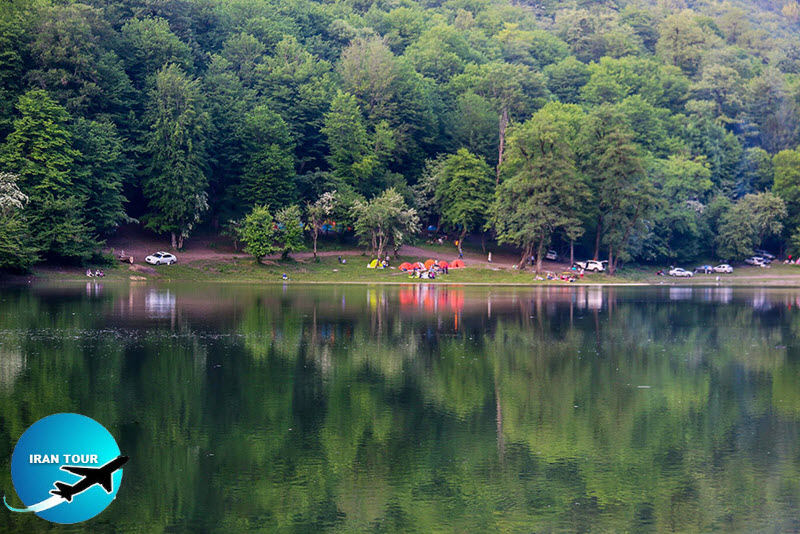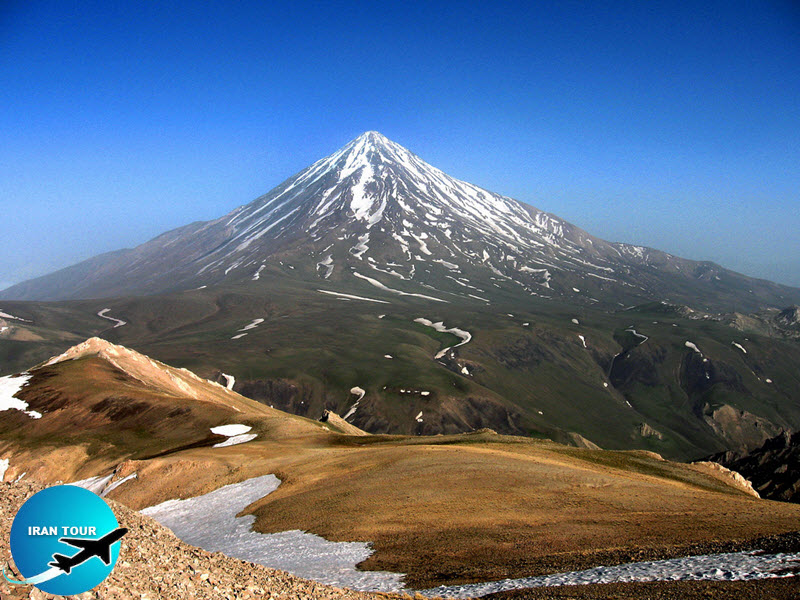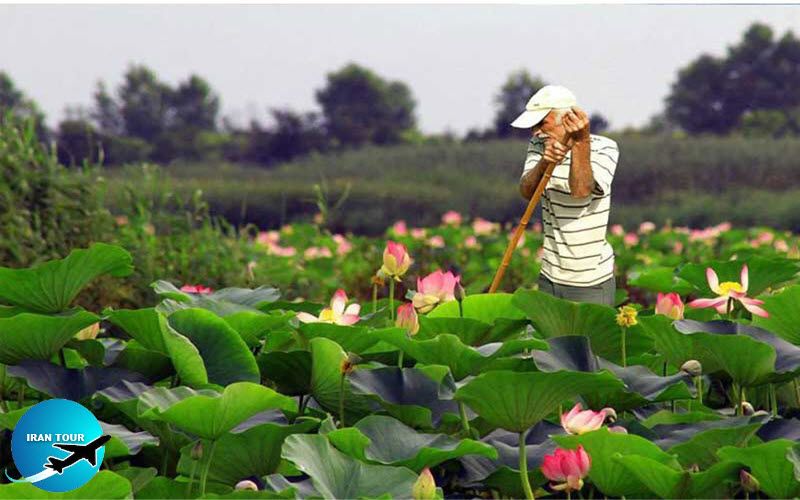Copyright 2020 - 2021 irantour.tours all right reserved
Designed by Behsazanhost
A trip to the Caspian lake's coasts the Paradise of Iran
A trip to the Caspian lake's coasts the Paradise of Iran
The Lands of the north of Iran and south of the Caspian lake, known as the Caspian Sea, are a lush green paradise with all kinds of tall and old trees - vast meadows, lush green mountains, small and large local sluices, vast rice's fields, pleasant climate, and the hospitable people is the most important tourist destination of Iran traveler in all seasons.
 |
1- Persian Caviar
When you are talking about Iranian exports, some things come to mind: oil, exquisite carpets, high-quality pistachios, and unique caviar. Along with the best sturgeon from the waters of the Caspian Sea, caviar is one of the country's main exports, generating more income than crude oil. The Caspian sea produces 95% of the world's Caviar. But don't count on seeing Iran's Caviar all over the shops. The heavy price tag on caviar has made it synonymous with luxury. It is virtually for export.
 |
2- The Caspian Sea
The Caspian Sea or Mazandaran Sea is the world's largest inland body of water, with a surface area of 371,000 km² (143,000 sq. mi.), and therefore has characteristics common to both seas and lakes. It is often listed as the world's largest lake, though it is not a freshwater one. The Alborz Mountains Range causes to flow of various rivers(Amol, Haraz, Sefid rood Rivers) into the Caspian lake, some of which are very suitable for water sports(Rafting).
 |
3- Northern and specially Gilani Cuisine
The Caspian sea has an important role in the cuisine style of Iran's northern cities(Iranian Cuisine). Different kind of fish, birds, and local poultry has been used in their dishes. If you want to try the best B&B fish kebabs this is it. But, they try to ignore the sea and focus on the local wealth of fruit, nuts, olives, and vegetables. Typical dishes are packed with garlic and turmeric, which can be rather shocking for the sensitive taste buds of central Iranian tourists. Sirabi is essentially fried garlic leaves with egg, Shami Rashti is deep-fried lentil-and-meat patties, Baghilah Qotoq are dill-and-garlic-flavored broad beans, while Anarbij (meatballs in walnut and pomegranate sauce) is a variant of Fesenjun (chicken with walnuts). Torche (sour) kabab is another favorite. Easier to find than any of the above is mirza ghasemi, a vegetarian marvel of mashed aubergine, squash, garlic, and egg. Although often listed as a starter, it makes a delicious meal when served with rice or bread.
 |
4- Hyrcanian Forest registered as the second natural world heritage of Iran after the Lout Desert
The second natural effect of Iran has registered after the Lut desert in the 43rd of the UNESCO World Heritage Committee. Hyrcanian forests in northern Iran and in the south of the Caspian Sea are spread in all northern provinces of Iran Mazandaran-Gilan and Golestan provinces are covered with these forests of 40 million years old. The Hirkani ecosystem is home to 296 bird species, 98 mammal species, and 150 native trees and shrubs. These forests have different types of vegetation depending on the altitude. Its most famous trees are rush, oak, alder, elm, ash, and cedar.
 |
5- Hot Springs
Another feature of the northern cities of Iran, especially the Mazandaran province, is the existence of different hot springs in this province. Ramsar, a coastal city, is another place for Iran's hot springs.
Ramsar hot spring water contains gaseous sulfur and bicarbonate of calcium chlorine and comes from the Alborz mountains. The temperature of the largest Ramsar hot spring is around 42 ° C, which is best for the body. 5 km from South-East of Ramsar, in Sadat Mahalleh and Katalem, you can find several hot springs with pools and tubs. They’re beneficial for rheumatism, muscle pain, and derma problems. Ramsar Hot Springs have a record in history as a French general who worked for Nasereddin Shah in Qajar era explained their curative aspects in his travelogue. Larijan Hot Springs of Amol is another stop to explore Iran’s hot springs. Although they have various health benefits.
As hot springs are formed by volcanic activities, they’re located in the mountainous area of Larijan in Amol. Based on the geologic conditions, there are many in Alborz Mount, especially around Damavand Peak. The most important one, Rineh Hot Spring, is in Ab-e Garm Town. The temperature of Larijan Hot Springs is about 62 c and the water is full of Sulfur. Due to this reason, it’s efficient for derma disease, joints pain, and rheumatism.
Badab-e Surt Springs
Badab Soort Terraces Springs is the general name given to two mineral hot springs west of Orost village in Mazandaran Province, Iran. The constant flow of hot water over the centuries has formed travertine terraces of many magical colors. The colors are the result of the carbonate minerals in the water. There are only a few of these wonders of nature in the world.
 |
6- Damavand Peak
The epic and majestic Damavand volcano mountain, at 5,671 meters (18,606 feet) above sea level, is the highest peak in Iran and the tallest one in the west of Asia is commonly known as "the roof of Iran". There are many epic and poetic stories about this legendary peak. These stories illustrate the importance of this historic peak in Iranian history - literature and culture. Like the Fujiyama in Japan, the snow-capped peak of Damavand is popular with mountain lovers. Damavand is located in the Alborz mountain range and is more than just a natural wonder for the country. It is actually one of the symbols of Iran and since ancient times has played an important role in Persian mythology. This volcano is located so close to Tehran that on a clear day you can see its snow-capped peak in the city from afar. Considering the fact that there are 16 routes to reach the summit, Damavand is among the most accessible summits with a similar height in the world.
 |
7- Historical Sites
As noted earlier, the permanent moisture on the southern coast of the Caspian Sea has destroyed most historical monuments. But a number of these that remained, prove its glorious history.
- Gonbad-e Qabus (tower): Gonbad-e Qabus is a monument in Gonbad-e Qabus city and a UNESCO World Heritage Site since 2012. It marks the tomb of the King - Ziyarid Qabus (r. 978-1012) and was built during his lifetime in 1006/7
- Zoroastrian fire Temple: Amol city.
- Jameh Mosque Amol city: Its primary structure dates to the first century AH and during the reign of the Qajar dynasty and Safavid dynasty renovation.
- Safi Abad Palace Behshahr: It is belong to Safavid dynasty.
- Safavid Carevanserai at Sari city.
- Resket Tower: The Resket Tower in the district of Dodangeh dates back to the 11th century. It is the royal tomb of Bavandid (651–1349). This tower is 18 meters high and almost 15 meters wide at its base.
- Marlik Hill: Marlik is an ancient site near Roudbar in Gilan Province (in northern Iran). This hill also known as CheraghAli Tappeh is located in the valley of Gowhar-Rud (crystal river), a tributary of Sepid Rud River. Marlik is the site of a royal cemetery, and artifacts found at this site date back to 3000 years ago.
- Tee Tee the Safavid Carevanserai, Gilan province.
- Lisar Castle: This magnificent structure is relevant to the Saljuqi period (Seljuq dynasty).
- Rudkhan Castle: Hundreds of Steps but worth visiting! Rudkhan Castle is an ancient brick and stone medieval castle located 25 km southwest of Fuman city (Fooman) in Gilan province. It has remained from the Sassanid Empire, this area was a defensive position against the Arabs.
 |
8- Anzali Lagoon
You may have seen pictures of water lilies and their large green leaves floating on the water; leaves on which the frogs sit and relax and through which the crimson lily shows itself. You can see these dreamlike scenes up close in the Anzali lagoon. The bright leaves of the lagoon lilies spread out like a green carpet in front of visitors. With each row and movement of the boat, another beautiful setting is revealed. Further on, a flock of mallard ducks flies overhead. The lagoon sky is filled with migratory birds that choose the Anzali lagoon as a temporary resting place for their winter trip. Of the 145 species of migratory birds identified in Iran, 77 species found that the lagoon of Anzali is suitable for their stay because this habitat provides them with a festival of rich sources of plants and aquatic animals. If you like bird watching or bird watching, we recommend spending a few hours in the lagoon of Anzali to observe the flight of white or gray pelicans, white-fronted goose, coots, swans, and other types of birds. You need a boat to admire the magnificent lagoon landscapes.
 |
9-Tea Fields
If you are interested in an amazing tea experience, this is it, Lahijan city the center of Iran's tea fields. We will take you out on a guided walk in our tea fields located in Lahijan which is one of the most important cities of Iran’s northern Gilan province with regard to tea farming to taste our teas. On a walk in the tea fields, you will really see the tea plants, soil, and women workers that are different in a stable ecosystem.
 |
10- Hospitable People
It has been a host of historical tribal peoples from all over the world in the past, and many migrations have been made to this area. From the immigration of the historic tribes until the arrival of the Poles and Russians in World War, all have caused Gilan to host many people. These people created a special sense of security in their guests, that’s why the people of this land were famous for hospitality.
They treat their friends well, but they fought hard against the enemy. The obvious example of this feature can be found in the Gilani encounter with the Arabs and over a century of resistance to their entry into their land. If in the architecture of Iran’s desert areas there are narrow streets and tall walls, there are still houses with short walls in Gilan. Because the desert areas have always been exposed to the invasion of the aliens and they paid a lot of attention to security. The most important feature of the Guilan peoples that attract tourist is the efforts of women and men side by side to the cultivation of rice and various products. Strong social relationships and sincere cooperation are among them.
- Details
- Category: Where to go in IRAN

















